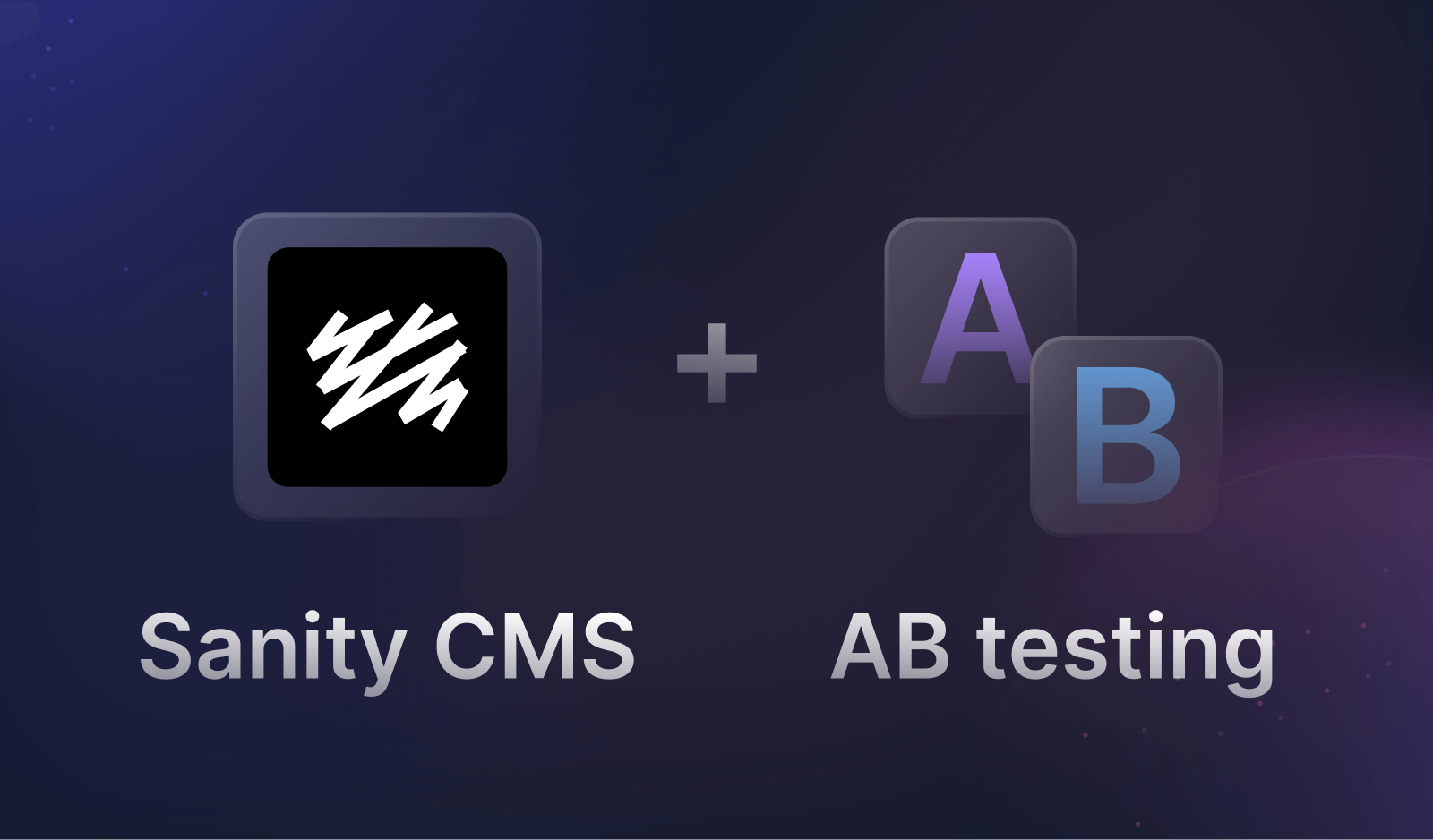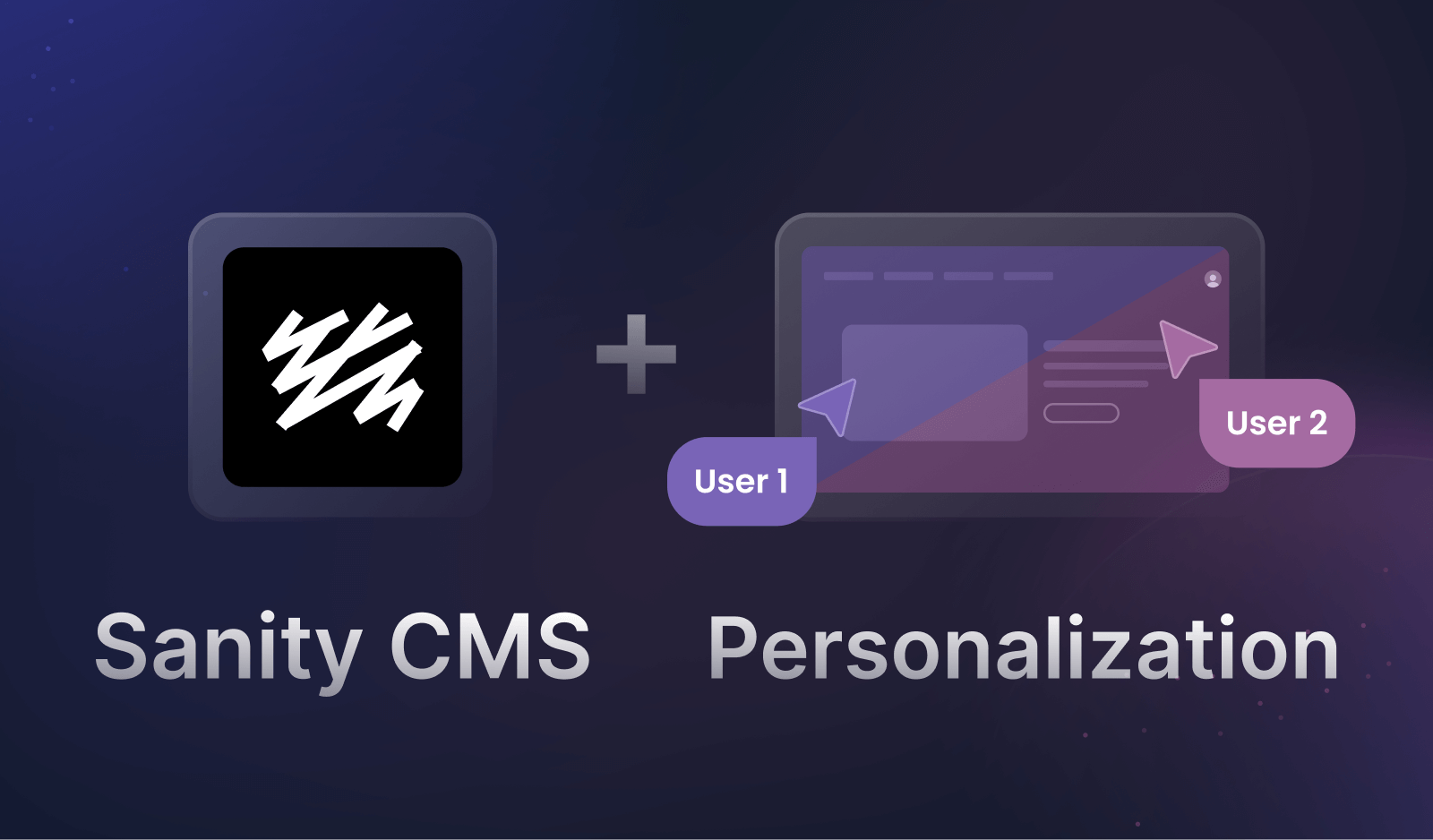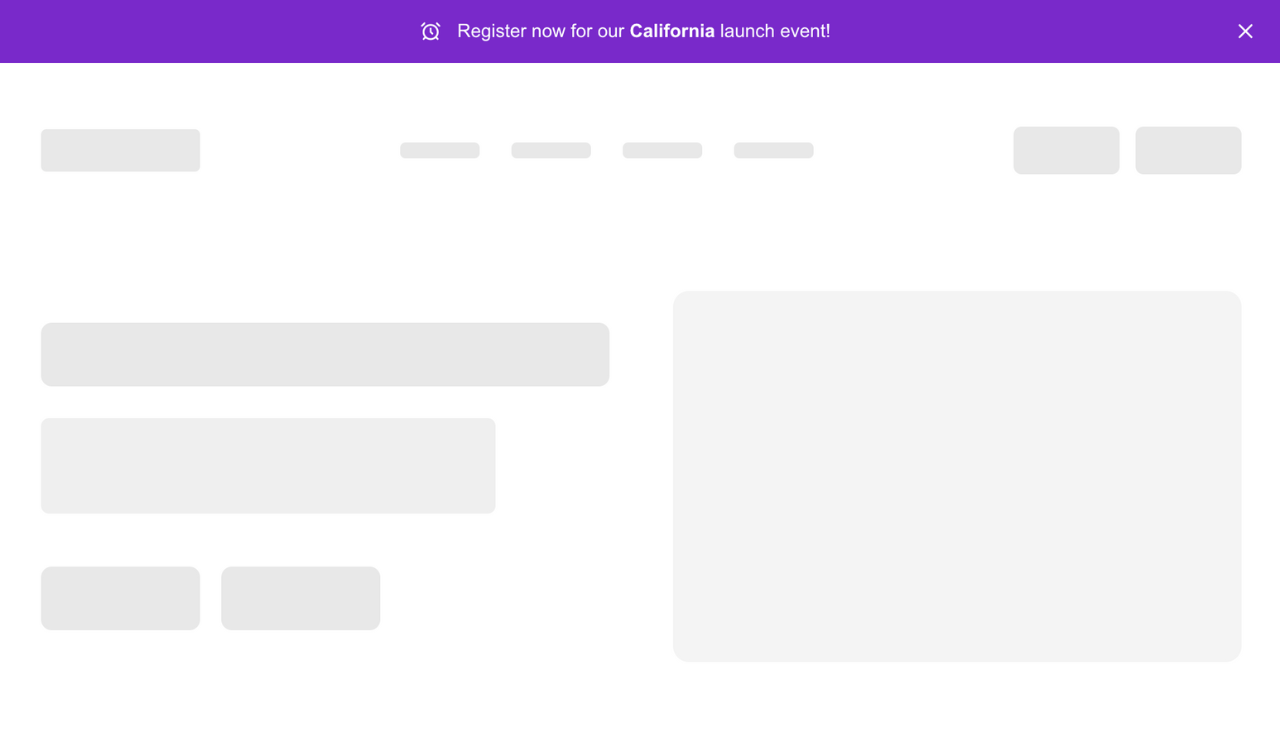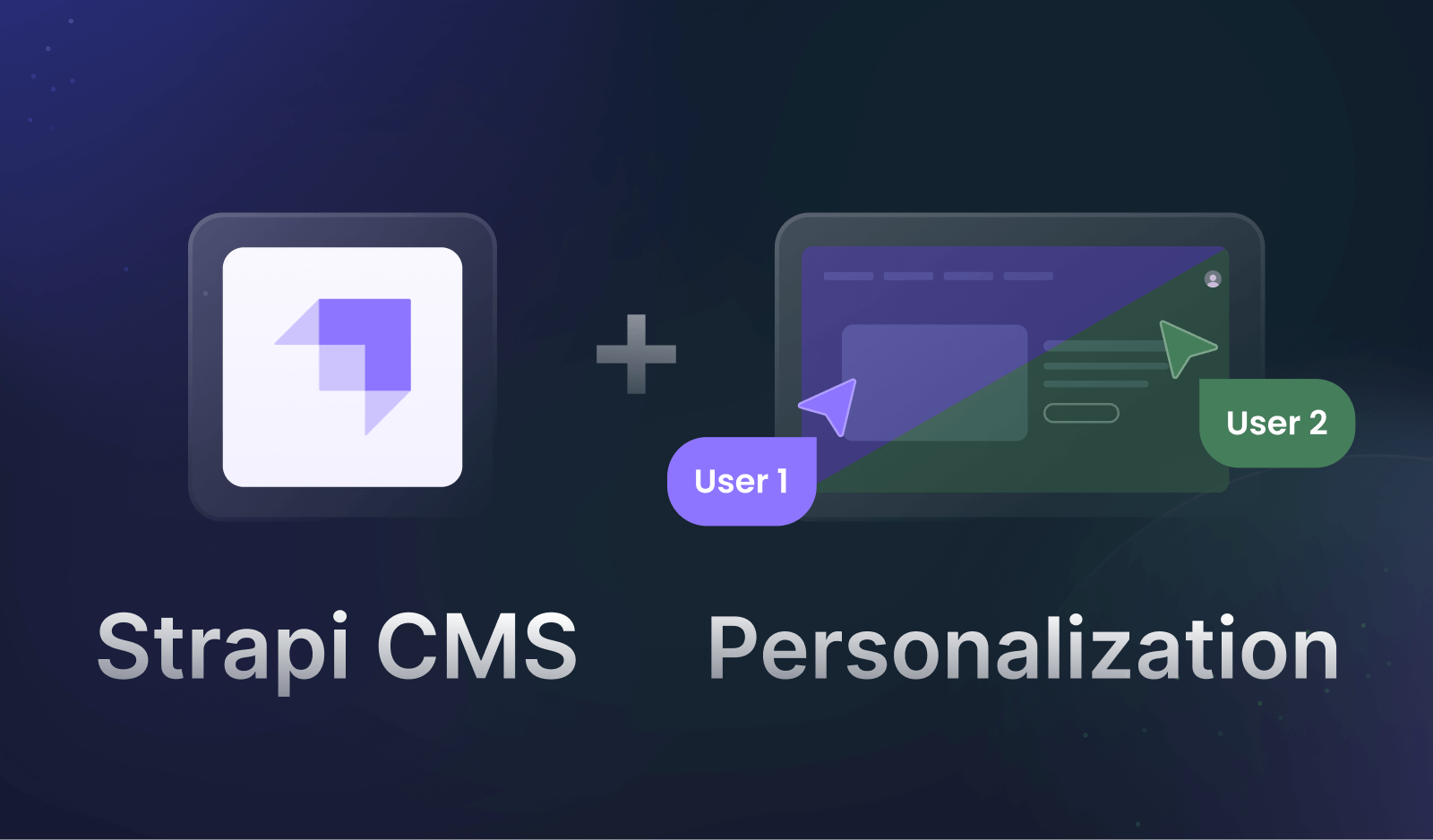Strapi CMS integration
An integration template for projects using Croct and Strapi.
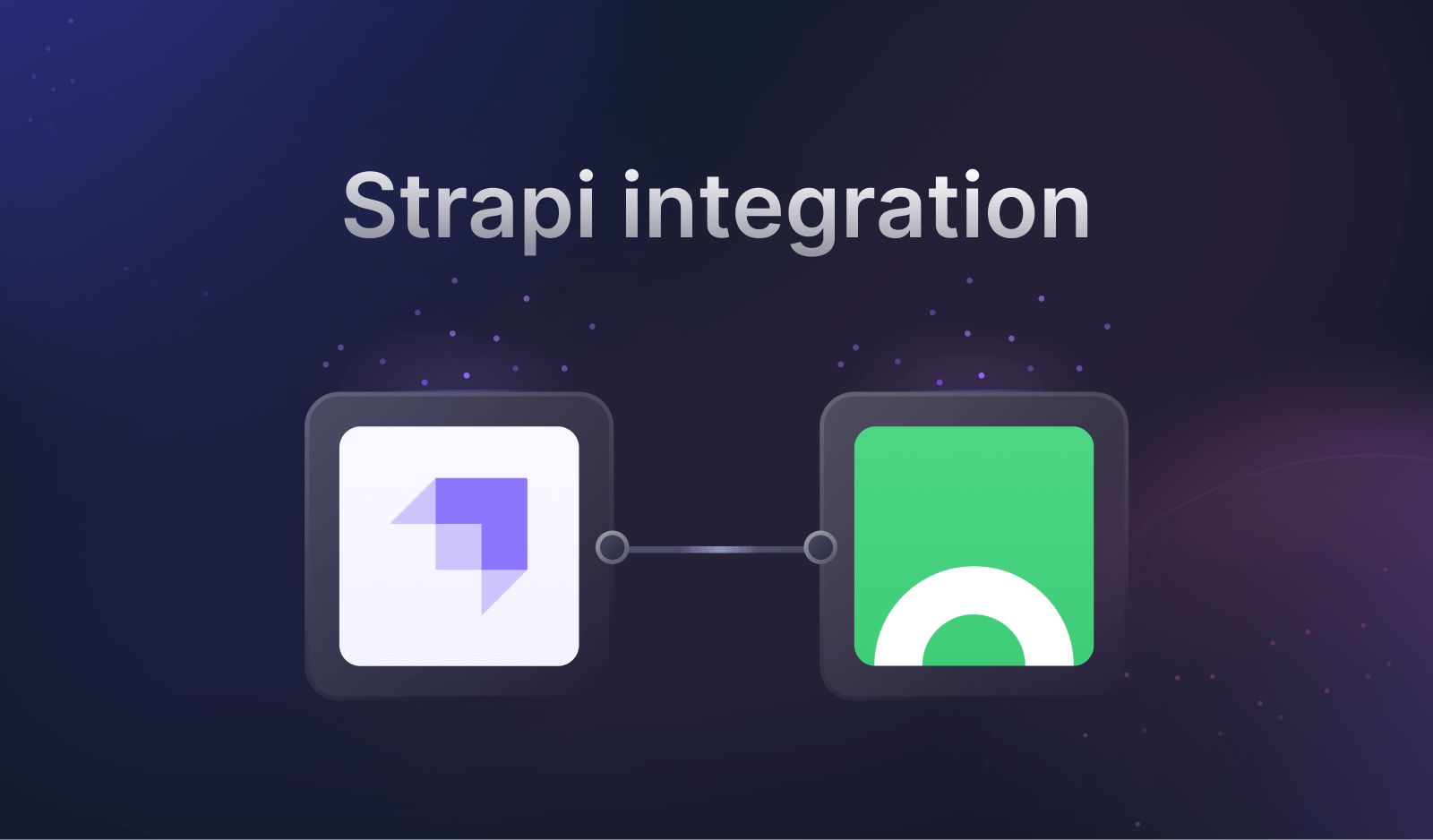
Introduction
Looking to add dynamic content blocks to your Strapi-powered site?
This template combines Strapi.io, Next.js, and Croct to help you implement dynamic content without changing your CMS.
It's the fastest way to add AB testing and personalization on top of Strapi.
Croct replaces static component content with dynamic content, allowing you to manage everything directly on the UI while using Strapi content as a fallback.
Since it comes with built-in audience segmentation and analytics, there's no need to work on extra integrations with CDPs to segment visitors or analytics tools to gather insights.
Using Croct, you get:
- AB testing support with real-time audience evaluation
- Content personalization based on location, behavior, or custom rules
- Built-in analytics and Bayesian analysis for every variant and experience
- Seamless compatibility with your existing Strapi schemas
- Fast implementation with zero CMS migration
This template is compatible with features available on the forever-free plan.
How it works
This template leverages the Strapi dynamic zones feature. In Strapi, a dynamic zone is a field that allows you to create flexible content structures by combining different types of components. Think of it as a container where you can choose and arrange different reusable blocks to build your content pages.
The homepage contains 8 sections, as follows:
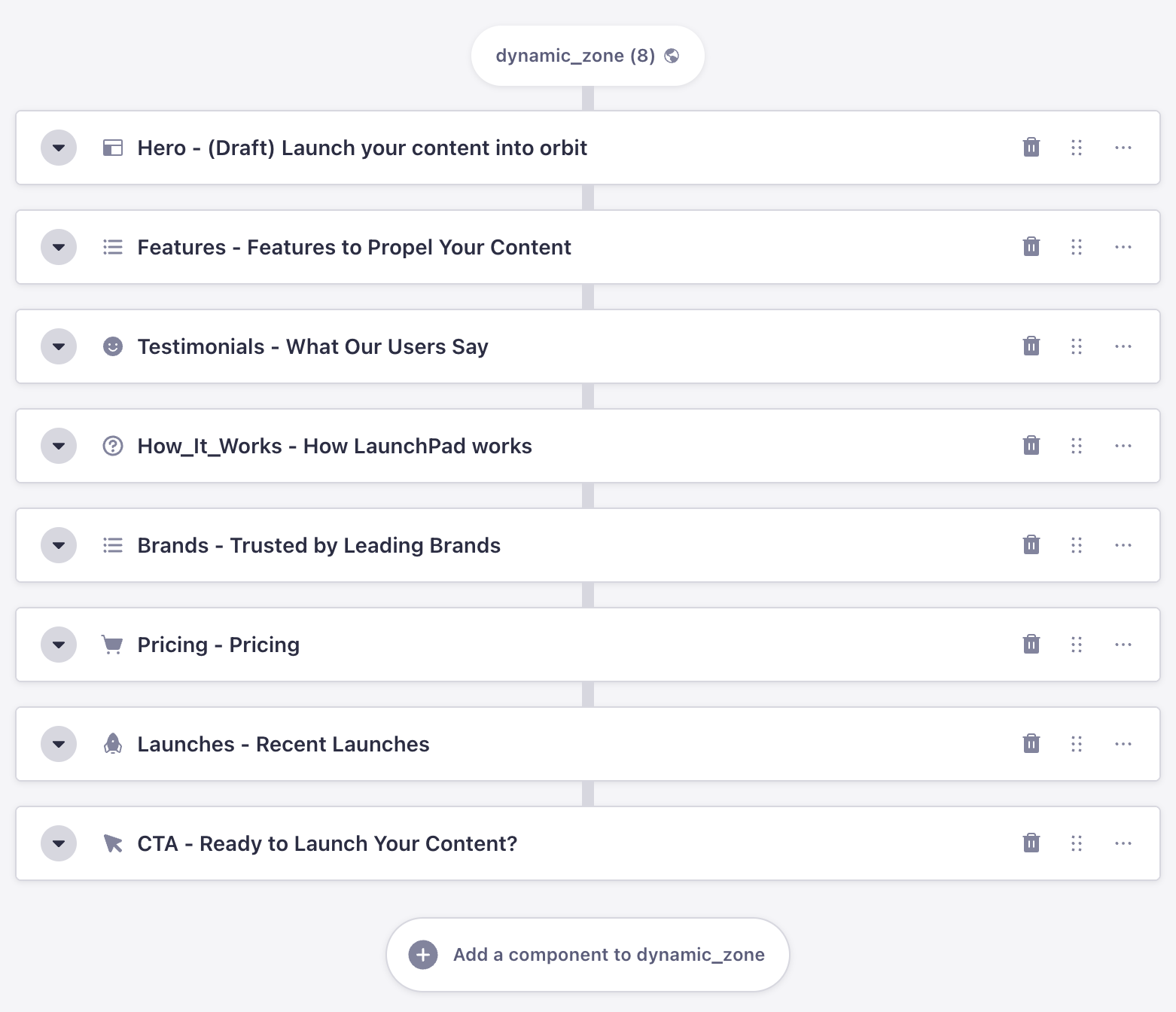
To integrate Croct slot into Strapi, all you have to do is map your components and slots:
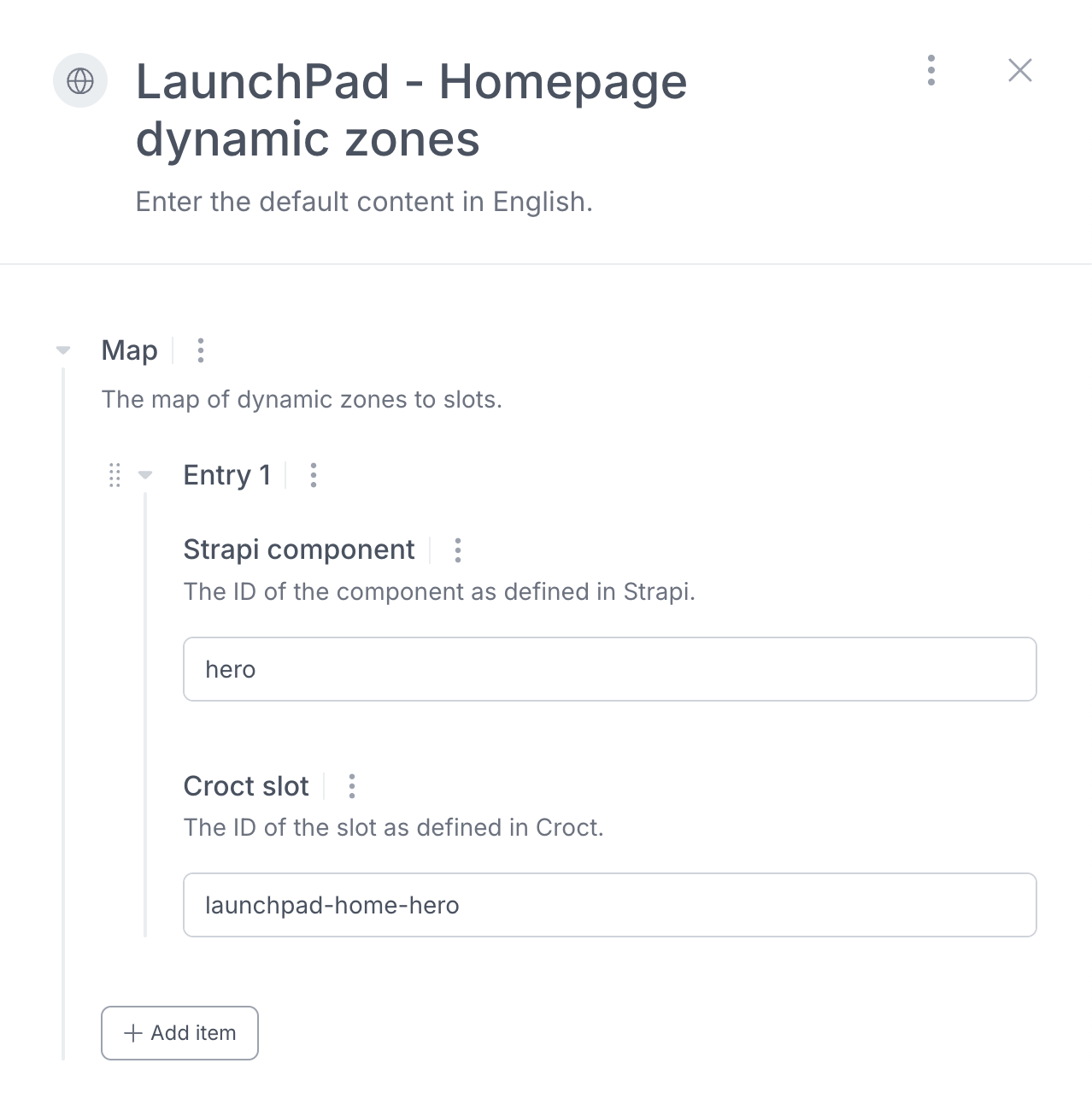
Check this article for more details about Strapi integration.
Usage
Run the following command in an empty directory to create a new project using this template:
npx croct@latest use croct://integration/strapiStart building in seconds
Paste the following command in your terminal and let the CLI do the rest.
npx croct@latest use croct://integration/strapi